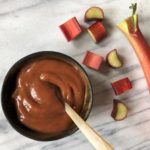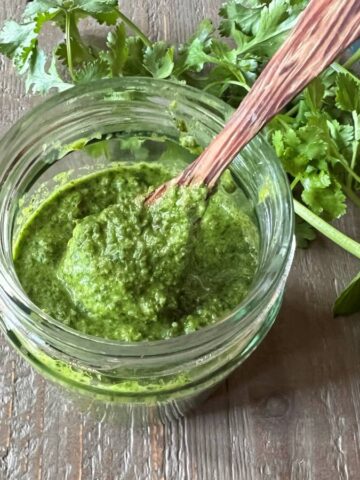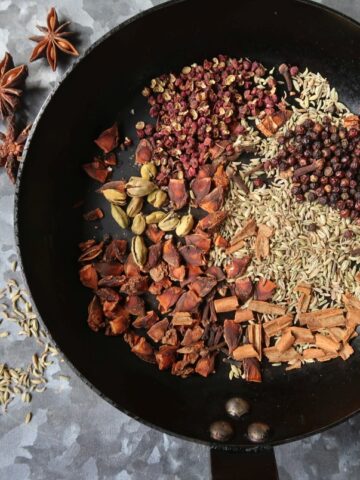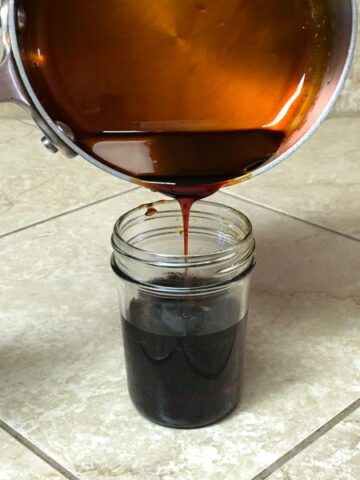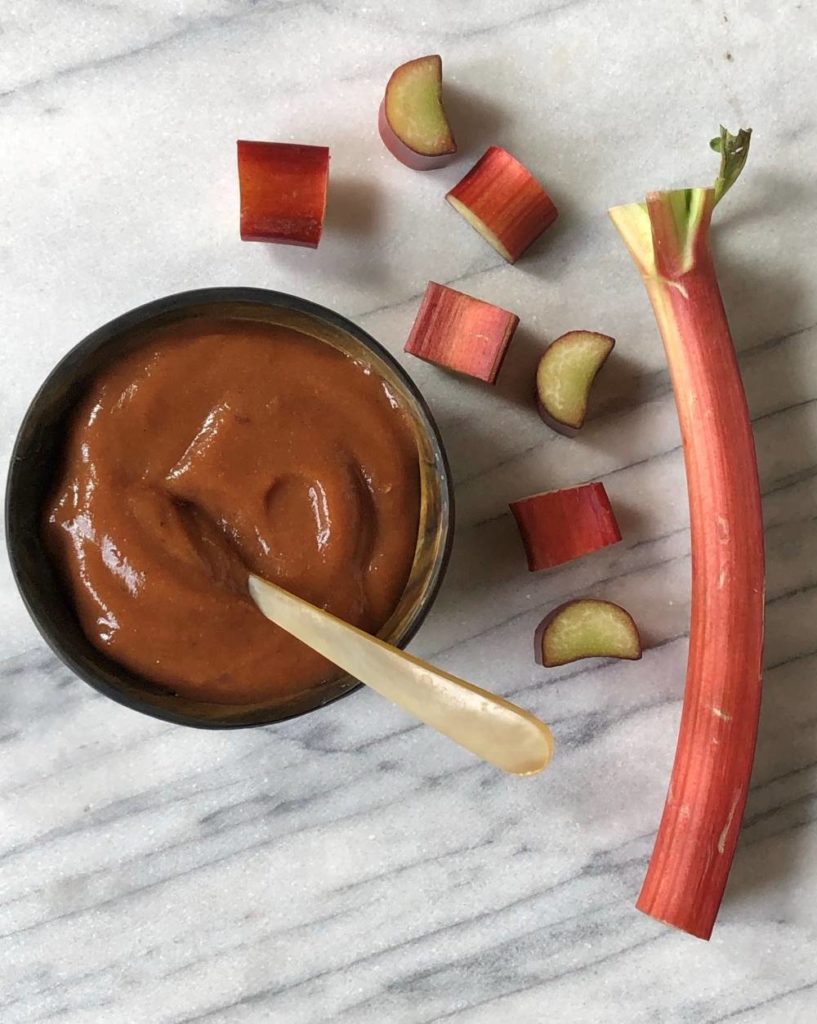
Crimson stalks of rhubarb often conjure up images of pie, but when I first tasted it in the late 1990s, a local farmer told me to try it thinly sliced with salt. He cultivated vegetables with aggressive flavors so his rhubarb was wincingly sour. I easily fell into the sweets camp when it came to cooking up rhubarb and mostly did like many other folks, baking it into tarts and such. Even so, rhubarb's characteristic charm diminished or was eclipsed by say, beautiful strawberry, which is naturally paired with the stalks because they both come into season at the same time. I didn't loudly cheer for rhubarb.
Over the years, our locally-grown rhubarb has gotten bigger and less sour. What comes to our farmers’ market nowadays is pleasingly tart, so much so that I likened the vegetable to fruits like tamarind and star fruit. And, though I’m fond of tamarind, the pulp is mostly sold at South and Southeast Asian markets, as well as some Chinese markets. Tamarind concentrate is an okay substitute but it’s not widely available either. In Vietnamese Food Any Day, I lean on pomegranate molasses as a decent substitute for tamarind liquid or concentrate.
Maybe rhubarb would be okay as a tamarind substitute? I started poking around and among my rhubarb experiments was this chutney, which is a take on the Indian date and tamarind chutney, called khajur ni chatni.
Rhubarb in Asia?
But first, is there a place in Asian food for rhubarb? Yes!
Turns out that rhubarb is native to Central Asia, according to sources such as the University of Minnesota library (see this page). It was grown for medicinal uses, particularly in northern China for thousands of years. The Chinese were the first to record its root as medicine. It was a purgative (mainly laxative) but it also developed a reputation as a cure-all.Â
In the thirteenth century, rhubarb strongly spread westward via the Silk Road trade route, and transporting the root was difficult. Consequently, according to the BBC and other sources, rhubarb became a prized commodity like saffron, cinnamon, and silk.Â
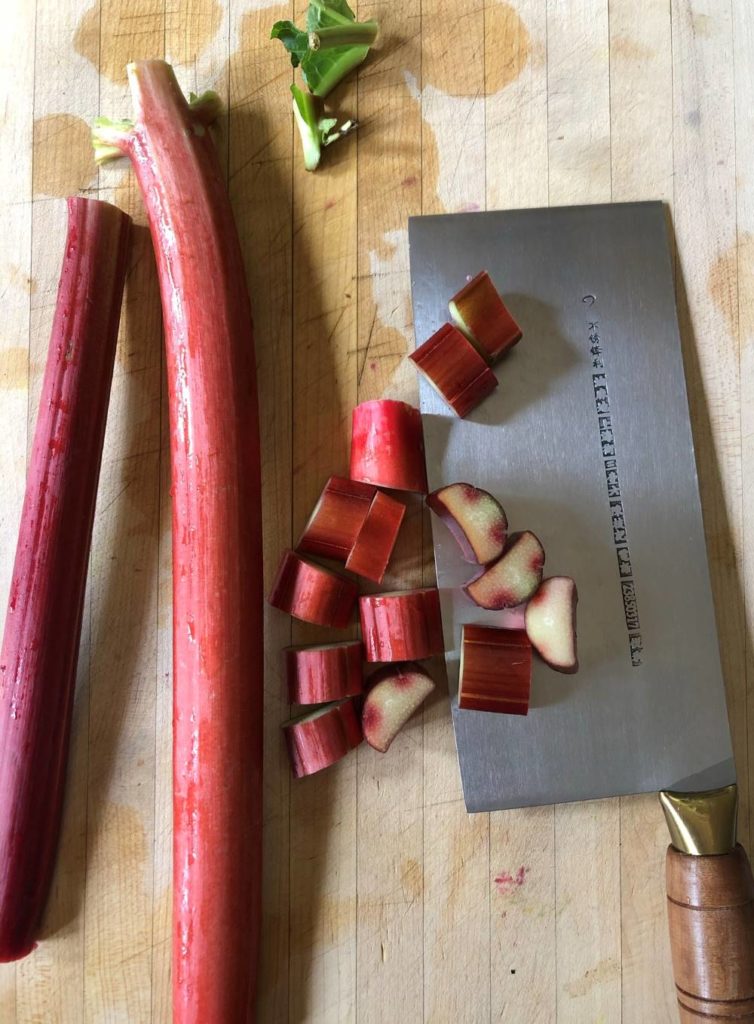
The plant wasn’t bred for culinary usage until later, around the 19th century. In the main, American cooks feature rhubarb as a sweet. I’ve seen some folks steep it in liquor or make a cocktail with rhubarb.
That said, I’ve spotted recipes for khoresh rivas, a Persian stew of lamb and rhubarb. In that application, rhubarb is used as a souring agent to cut the richness of the meat. In the Himalayan region, rhubarb is cultivated in the valleys. What about South Asia? I found a wonderful by Vikram Doctor about rhubarb in India plus a pickle recipe in Usha’s Pickle Digest: The Perfect Pickle Recipe Book.Â
Well, rhubarb has a history and potential that goes far beyond its moniker as the pie plant. I felt liberated to use rhubarb for chutney.
Transforming the Stalks
Rhubarb can be stringy in appearance so I pureed it with water then cooked it down into a thick slushy texture. The beautiful thing was the resulting raspberry colored puree. Note that initially, the mixture burbles and belches in the pot with some funky light khaki foam rising to the top. The foam eventually disappears during cooking.
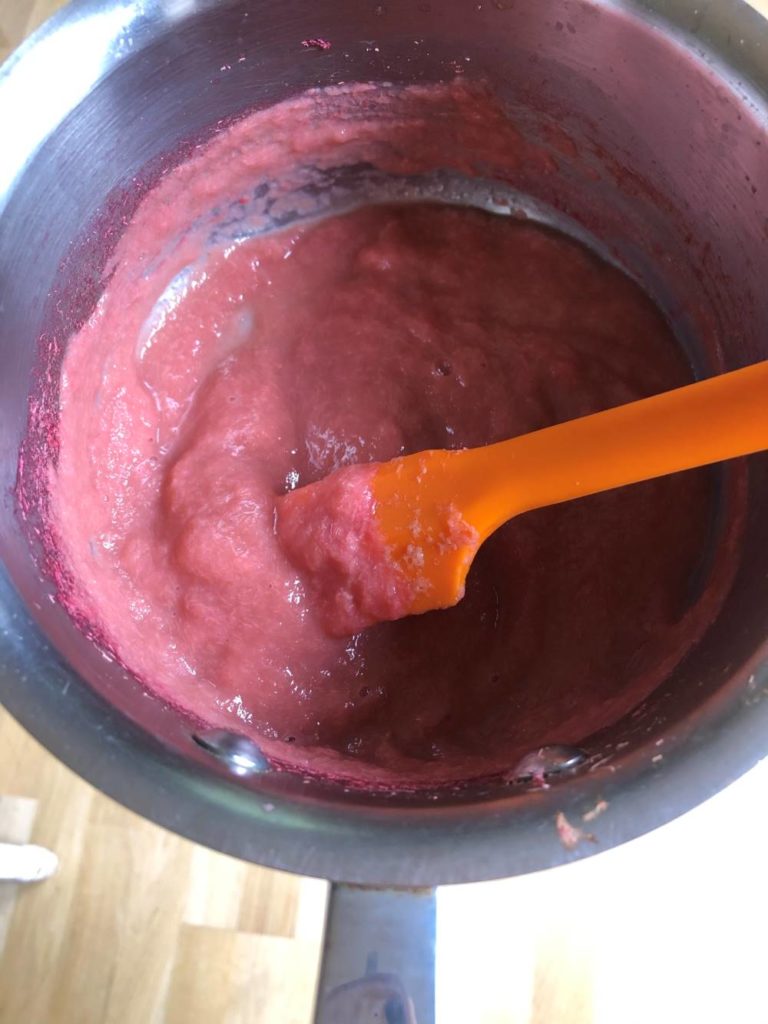
Then it was simply a matter of blending the mixture with ingredients to sweeten and spice things up.
Sweet Options
I opted for jaggery, an unrefined sugar in India, which I happened to have. Jaggery reminds me of Mexican piloncillo. To soften such kinds of sugar for chopping or grating, microwaved them, watching carefully or the whole chunk may melt.
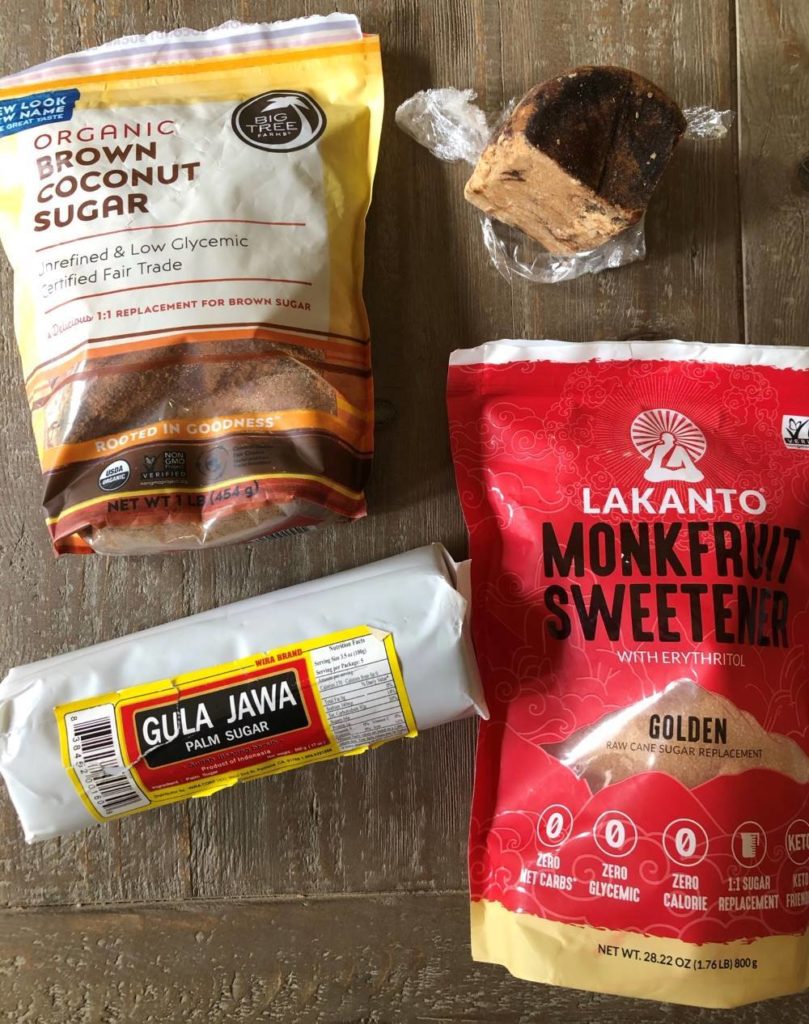
Without jaggery, use a flavorful brown sugar, coconut sugar, or palm sugar. If sugar is an issue, a substitute like monkfruit should work fine.
The other sweetener in the chutney are dates. They lend flavor and body to the chutney, such that the result is plop-able. It’s like a thick ketchup.
Why Pound Cumin?
There are only two spices involved, but with the cumin, I suggest you pound it. It’s not a lot of work but pounding cumin seeds means you’ll have the lively, sweet pungent flavor of cumin.
Among the best cumin around is one from Afghanistan and sold by Burlap and Barrel. I happen to have a lot due to a work assignment but it’s available in much smaller quantities. Compared to most commercially sold cumin, the B&B cumin flavor and aroma is nuanced and elegant.Â
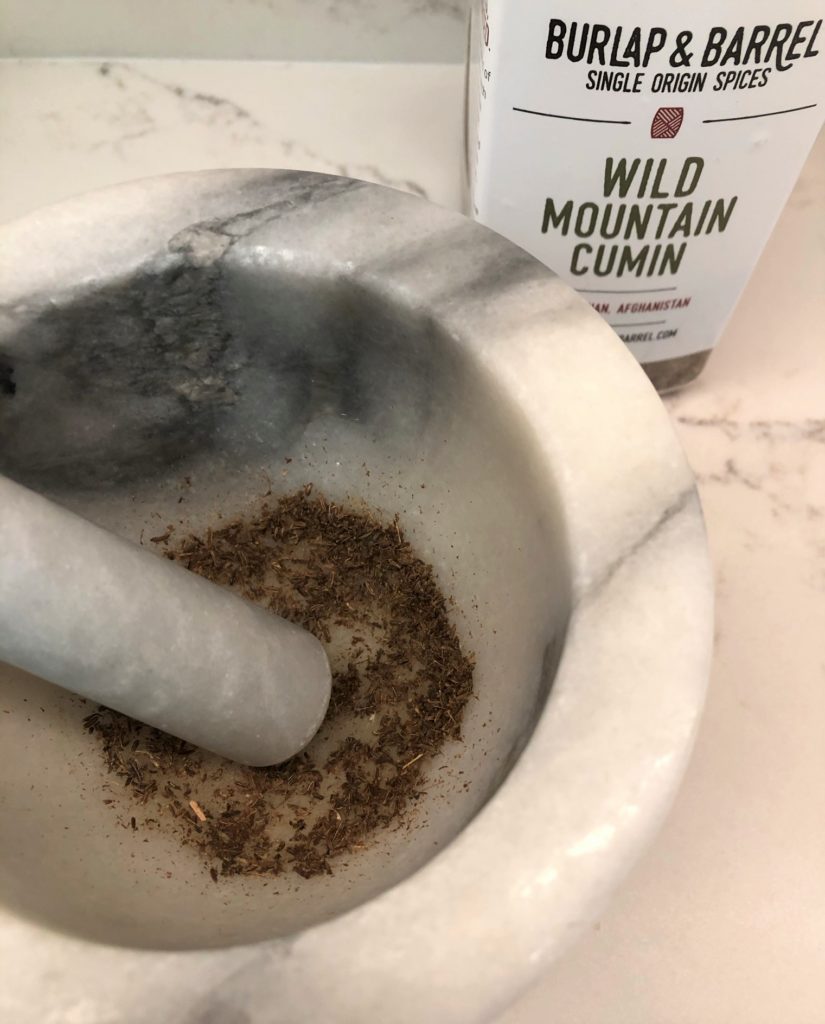
How was the Date and Rhubarb Chutney?
At first, I liked it so-so. Then I remembered that in this recipe, time is an ingredient. That’s to say, let the chutney mature for a few hours. I put mine in the fridge in the afternoon and trotted it out for dinner with panfried chicken cutlets. Between the two of us, we ate a third of the batch.
Compared to regular date and tamarind chutney, this rhubarb version was very good. It’s not the same because the former is a fruit with a longer tangy flavor while the latter is a vegetable with a greener, shorter flavor. Additionally, there’s a very slightly gritty texture to the rhubarb chutney due to the stalk’s nature. My husband didn’t detect it, he just wiped his plate clean of the chutney.
So, I think it’s totally worth it to make this chutney when rhubarb is in season -- usually from April through June, though some areas have a second season later in the year. I can see this date and rhubarb chutney with grilled meats and vegetables and spread on sandwiches. Of course, it would be great with samosas, pakoras, or papadum! Enjoy.
Related recipes
The rhubarb substitute may work quite well for this date and tamarind loaf cake. Puree 10 ounces of rhubarb in 10 tablespoons of water. Cook in the pan, cool then you should have the 1 cup needed for the cake.
Date and Rhubarb Chutney
Ingredients
- 8 ounces trimmed rhubarb
- About 1 cup water
- ¾ cup coarsely chopped or hand-torn pitted Medjool dates (about 5 ounces)
- ¼ cup lightly packed shaved jaggery, brown sugar, coconut sugar, or palm sugar (1.7 ounces)
- ½ teaspoon fine sea salt
- ½ teaspoon cayenne
- ½ teaspoon pounded cumin seeds or ground cumin
- ½ to 1 ½ tablespoons apple cider vinegar (optional)
Instructions
- Cut the rhubarb into chunks roughly ¾ inch wide, then put into a blender with ½ cup water. Whirl into a raspberry-colored puree. It won’t be totally smooth but do your best to minimize stringiness.
- Scrape into a small saucepan and bring to a vigorous simmer over medium heat. Lower the heat to cook (expect some sputtering) for 5 minutes, until thickened with no liquid separating. Remove from the heat and let cool for about 10 minutes. You should net about ¾ cup.
- Meanwhile, rinse the blender..Return the rhubarb to the cleaned blender, then add ⅓ cup water plus the dates, sugar, salt, and cayenne. Blend to a smooth, thick texture. As needed, pause the machine to scrape down the sides. Ideally, the chutney is thick enough to mound on a spoon. (If you want a thinner sauce, add water by the tablespoon but you may need to adjust the other ingredients too.)
- Transfer to a bowl (or airtight container) and stir in the cumin. Taste and if it is too sweet, stir in the vinegar. Let sit for about 2 hours to allow flavors to fully develop. Serve, refrigerate for up to 2 weeks; I’m sure this is freezable for a month too!













